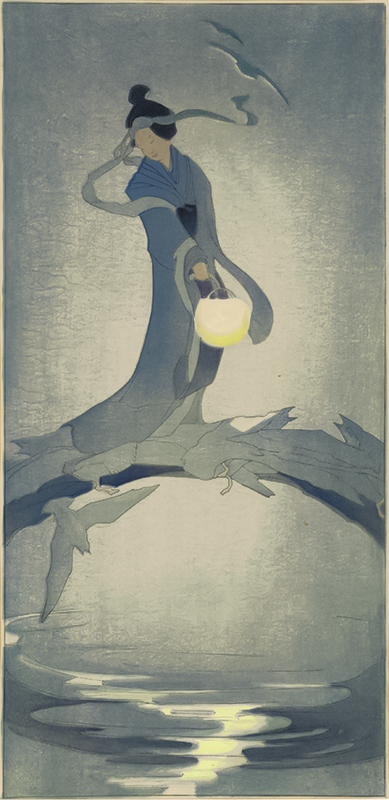
19th, 20th & 21st Century Fine Prints
707-546-7352 · fax 707-546-7924 · web: www.annexgalleries.com · email: artannex@aol.com
Tanabata by Bertha Lum

Tanabata
Bertha Lum
Tanabata
Bertha Lum
1869 - 1954 (biography)This beautifully printed impression is unsigned and is likely a proof Lum did that slipped through the cracks.
The Gravalos/Pulin catalogue raisonné comments on page 19: "It is interesting to note that Lum chose to depict myths such as .... Tanabata, which did not have a visual tradition. She invented a new iconography. In Tanabata(the goddess of spinning and weaving), for example, Lum created not only an image for the bridge of birds, mentioned in the legend, but a subtly graduated aura of light cast by Tanabata's lantern and even the lantern's broken reflection in the river."
The Japanese Tanabata festival, meaning "Evening of the Seventh" and also known as the Star Festival, takes place on the seventh day of the seventh month of the lunisolar calendar throughout the country (August in the Gregorian calendar). With origins in the Chinese Qixi Festival, it was introduced to Japan by China's Empress Koken in 755, and evolved into one of Japan's five major traditional festivals known as gosekku in the Edo period.
It celebrates the meeting of the two stars, Vega and Altair, in the night sky, seen in Japanese folklore as star-crossed lovers Princess Orihime, a weaver, and Hikoboshi, a cow herder, who lived on opposite sides of the Amanogawa (in the West, the Milky Way). Their marriage was forbidden by Orihime's father, Tentei, the Sky King or the universe, when they abandoned their duties to court one another. After hearing their pleas, he allowed them to meet once a year in the summer.
The festival includes wishing trees or designated bamboo stands, from which celebrants hang wishes written on colorful strips of paper from the trees' branches, along with intricate paper decorations. These branches and decorations are then burned or floated down a river at midnight.


